Best Space Photos of the Week Nov. 19, 2011
Auroras, Saturn Storms, Moon Maps & More
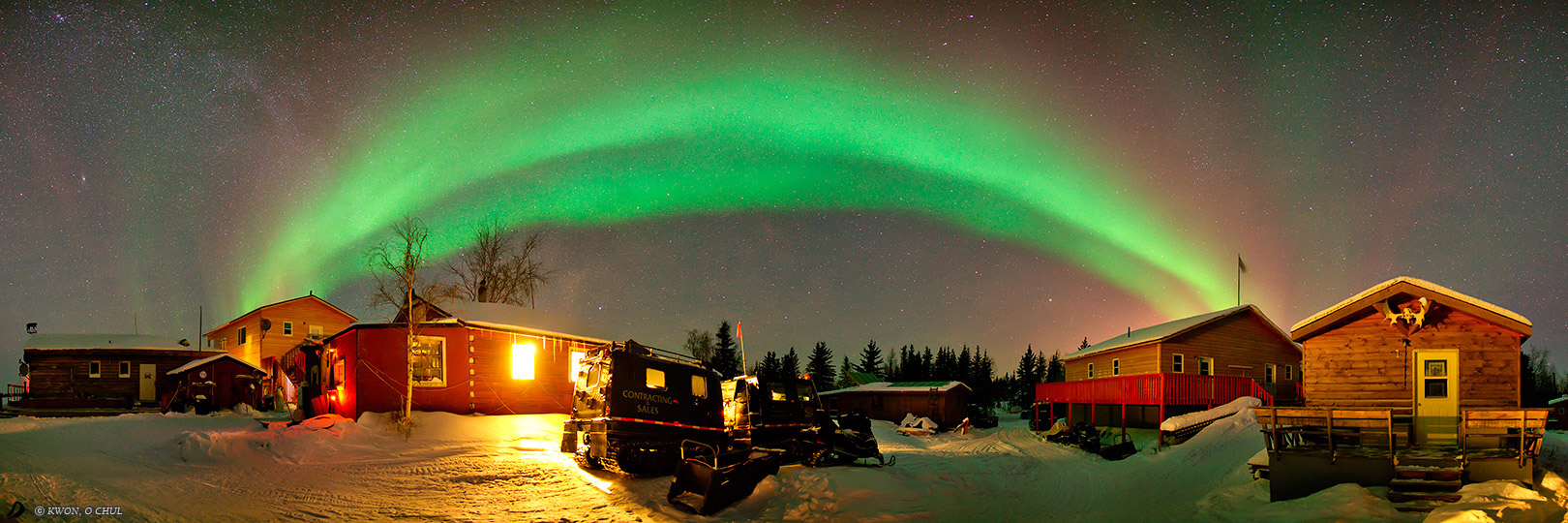
From a dazzling aurora view to a spectacular storm on Saturn, there were some stunning views from space this week.
Don't miss these stunning photos and images from the last week in space.
Astronauts Usher in New NYC Museum Space Show
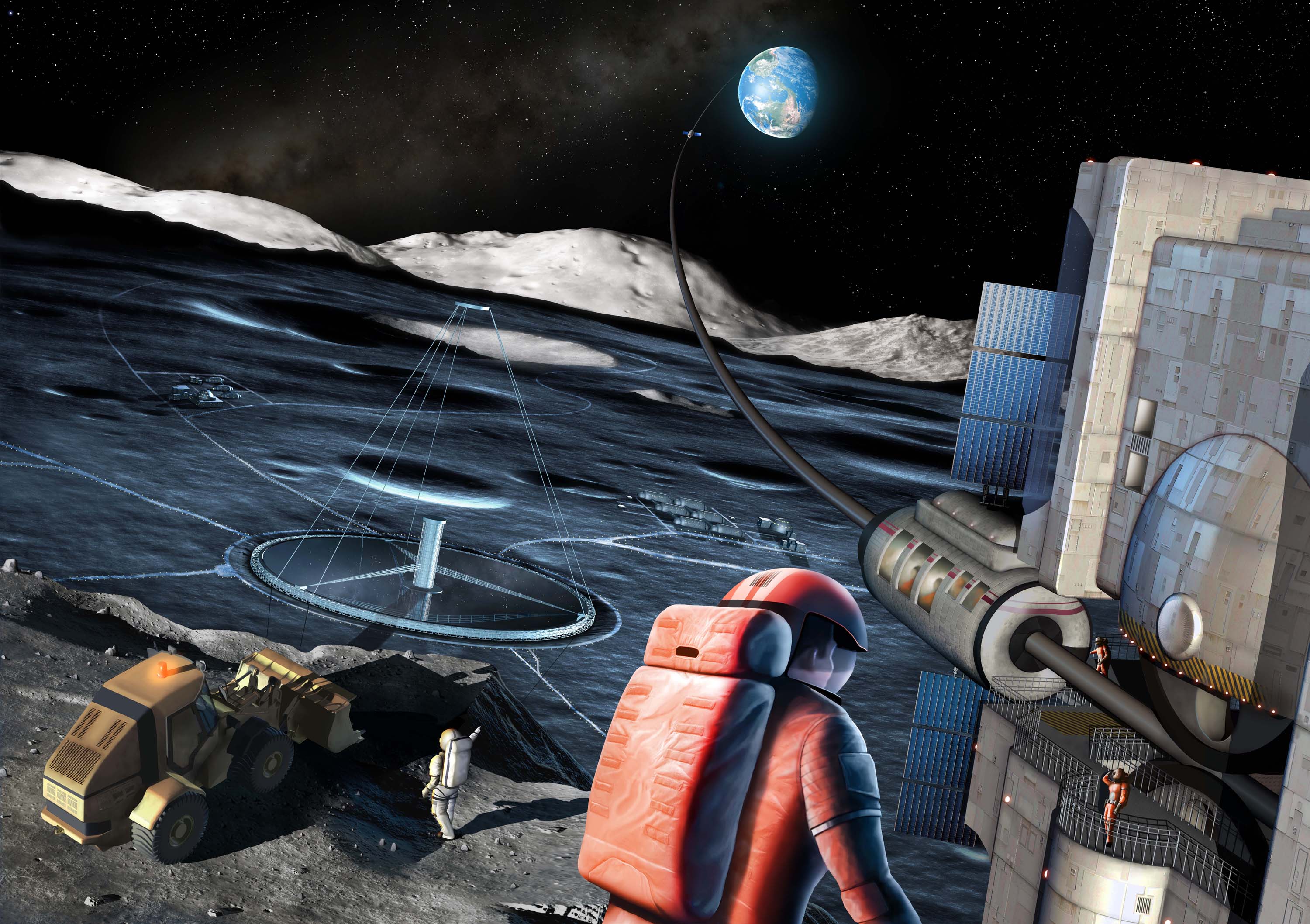
NEW YORK — The American Museum of Natural History here raised the curtain on its brand new space show this week, with help from two guys with first-hand experience.
NASA astronauts Mike Massimino and John Grunsfeld, who both flew on the last space shuttle mission to service the Hubble Space Telescope, were on hand at the museum to introduce a new temporary exhibition called "Beyond Planet Earth: The Future of Space Exploration."
The show opens to the public Saturday (Nov. 19), and will run through Aug. 12, 2012. [Full Gallery for NYC Museum Space Show]
Spectacular Photos of Monster Saturn Storm Snapped by NASA Spacecraft
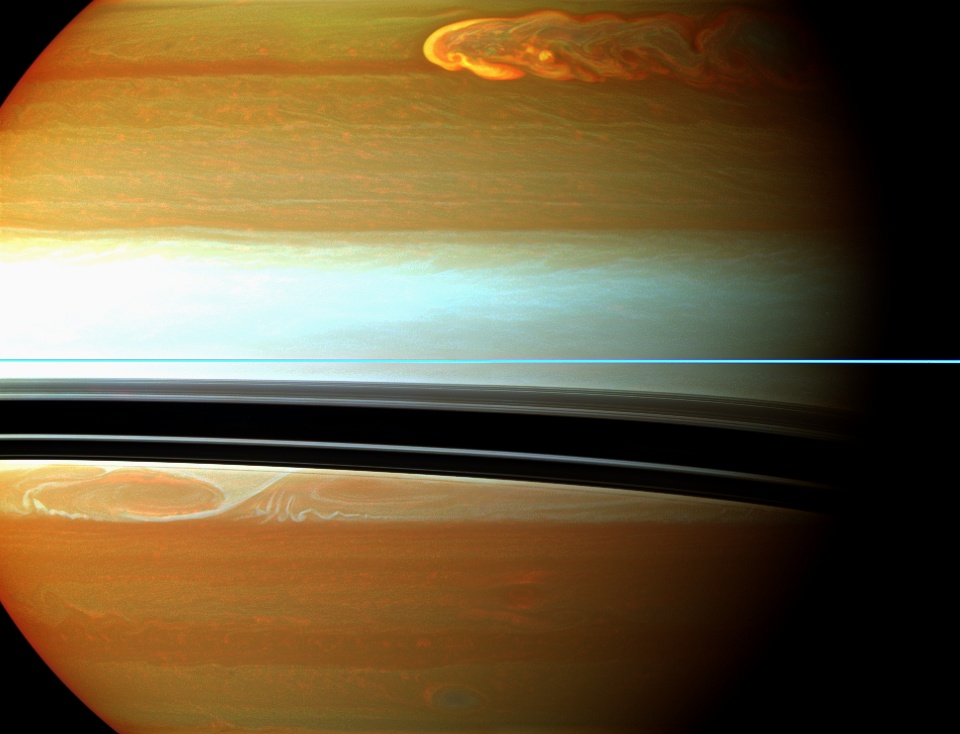
A NASA spacecraft has chronicled the birth, evolution and death of the biggest storm to hit Saturn in two decades.
The monster storm on Saturn emerged in the ringed planet's northern hemisphere on Dec. 5, 2010. It started out as a tiny spot but grew rapidly, completely encircling the planet by late January 2011. It eventually extended about 9,000 miles (15,000 kilometers) from north to south before sputtering out in late June.
The storm's 200-day active period makes it the longest-lived planet-encircling tempest ever observed on Saturn, researchers said. And NASA's unmanned Cassini probe watched everything unfold, snapping pictures all the while. [See More Amazing Saturn Storm Photos]
NASA Probe Beams Home Best Moon Map Ever
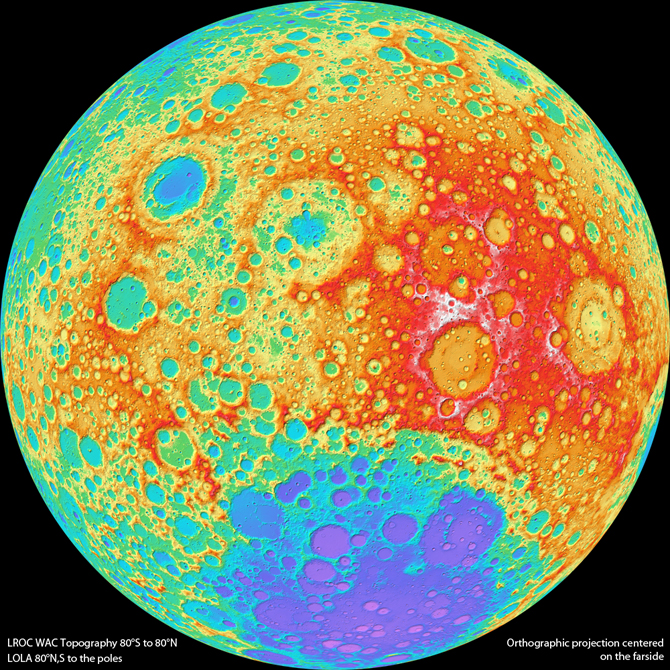
Scientists have stitched together the highest-resolution topographic map of the moon ever created, using observations made by NASA's Lunar Reconnaissance Orbiter (LRO) spacecraft.
The new lunar map covers 98.2 percent of the moon and depicts the natural satellite's surface and features at a pixel scale of about 330 feet (100 meters). A global view of Earth's nearest neighbor at such high resolution had never existed before, scientists said.
"Our new topographic view of the moon provides the dataset that lunar scientists have waited for since the Apollo era," said Mark Robinson of Arizona State University, principal investigator of the Lunar Reconnaissance Orbiter Camera (LROC), in a statement Thursday (Nov. 17). [Read More]
Article: Mysterious Symbols in China Desert
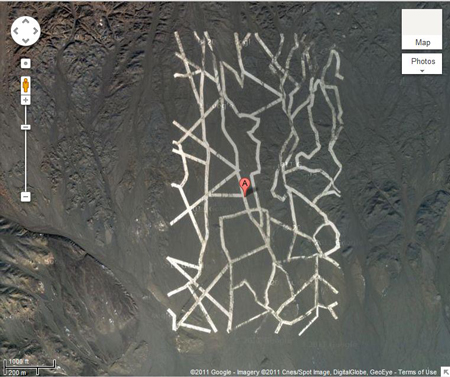
Newfound Google Maps images have revealed an array of mysterious structures and patterns etched into the surface of China's Gobi Desert. The media — from mainstream to fringe — has wildly speculated that they might be Chinese weapons-testing sites, satellite calibration targets, street maps of Washington, D.C., and New York City, or even messages to (or from) aliens.
It turns out that they are almost definitely used to calibrate China's spy satellites. [Read More]
Launch Pad on a Snowy Evening
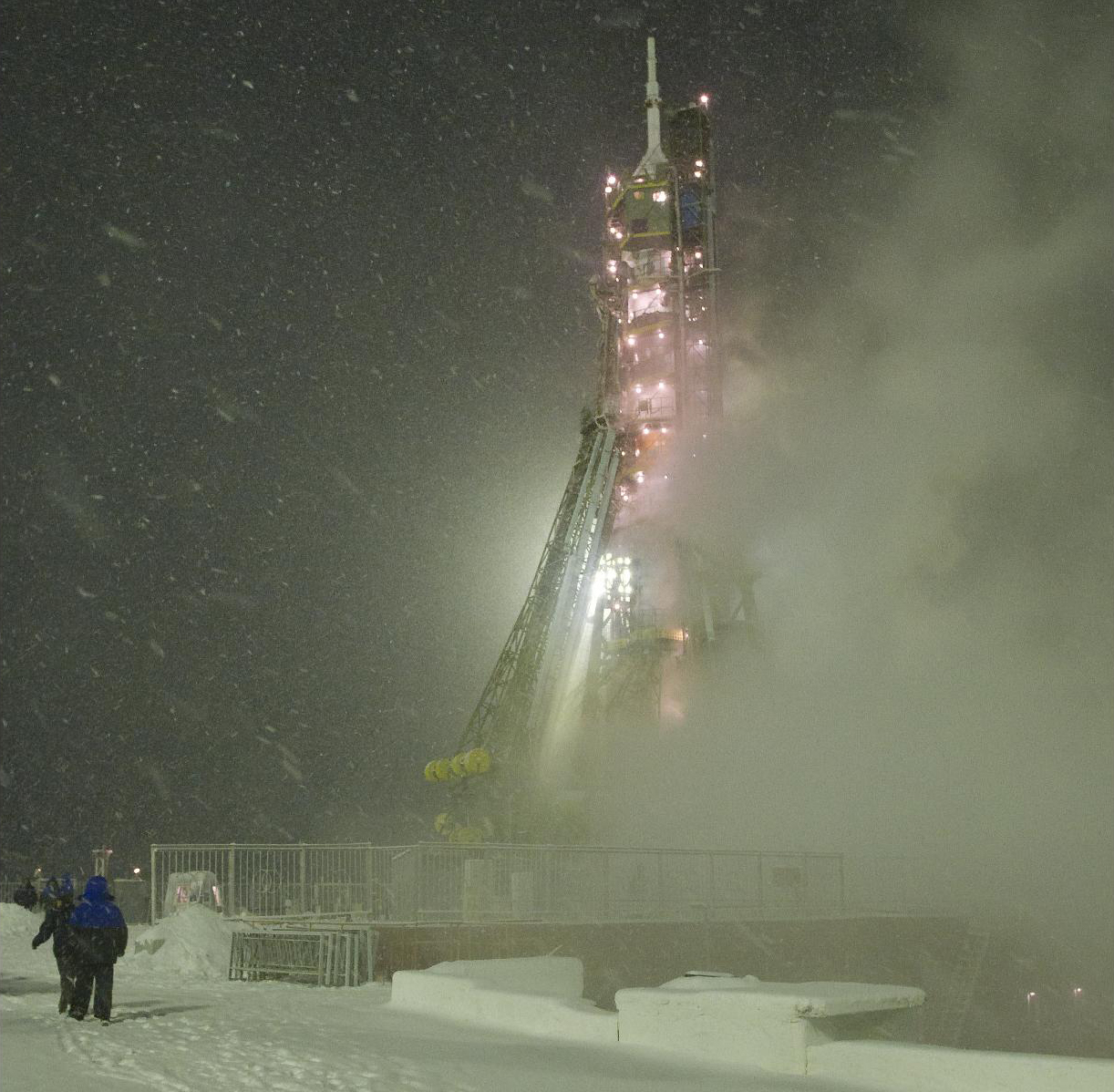
In the thick of a powerful snow storm, a Soyuz TMA-22 rocket carrying Expedition 29 crew members to the International Space Station awaits launch at the Baikonur Cosmodrome in Kazakhstan, Monday, Nov. 14, 2011. [See more amazing space images]
Spectacular New Image Exposes Nebula's Cool Clouds
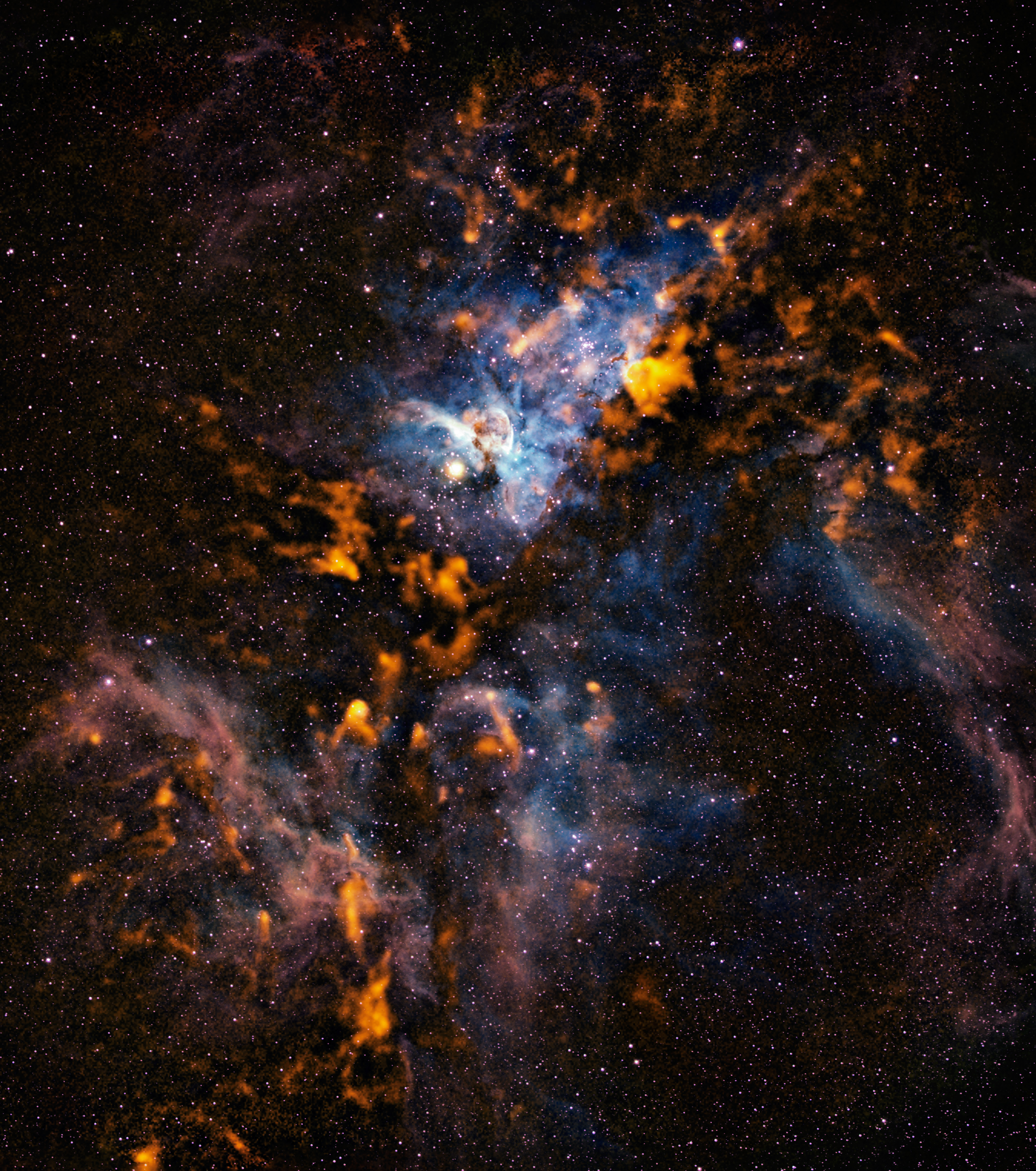
A stunning new image released on Nov. 16 of the Carina nebula reveals cold, dusty cosmic clouds where violent and dynamic star formation is taking place.
These clouds of dust and gas play host to some of the most massive and luminous stars in our galaxy, which make them scintillating test beds for studying the interactions between these young stars and their parent molecular clouds. [Read More]
Skywatcher Delivers Stunning Image of Northern Lights

It took a collision of charged particles from Earth’s magnetosphere and one veteran landscape astrophotographer from Seoul, Korea to deliver this green spectacle, which was posted on SPACE.com on Nov. 14.
Skywatcher Kwon, O Chul of The World At Night (TWAN), traveled to Yellowknife in northern Canada with a Canon 5d mark II + 24mm lens to capture this image of the Northern Lights.
The northern and southern lights — also known as the aurora — are mostly witnessed in polar latitudes. A clash of charged particles from Earth's magnetosphere with atoms and molecules of Earth's atmosphere (at altitudes above 50 miles, or 80 km) cause these lights. Solar wind from the sun carries these particles to Earth. [Read More]
Under the Stars, Tarantula
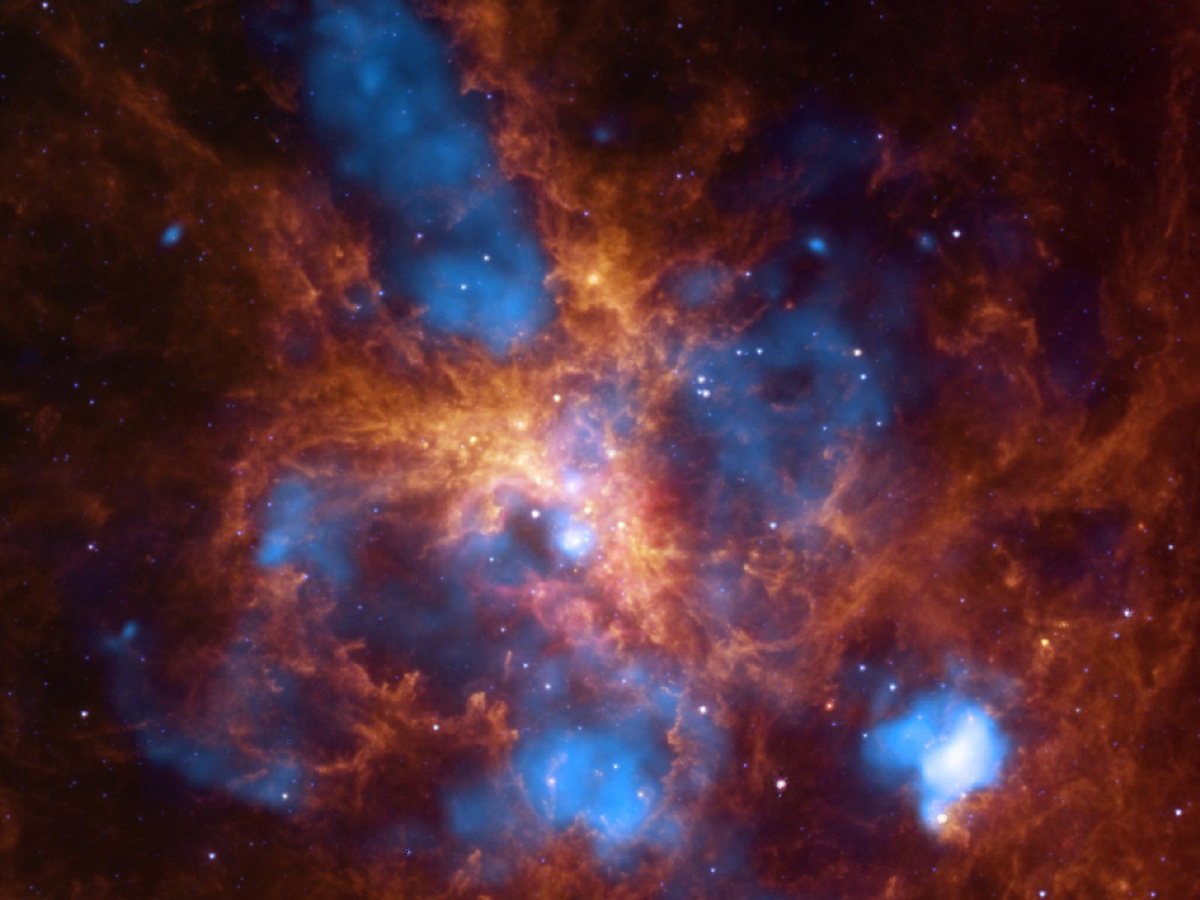
About 2,400 massive stars in the center of 30 Doradus, also known as the Tarantula Nebula, produce intense radiation and powerful winds as they blow off material. This image was posted on Nov. 16.
The star-forming region, 30 Doradus, represents one of the largest located close to the Milky Way, and it lies in the neighboring galaxy, the Large Magellanic Cloud. Multimillion-degree gas detected in X-rays comes from shock fronts similar to sonic booms formed by these stellar winds and by supernova explosions. This hot gas blasts out gigantic bubbles in the surrounding cooler gas and dust shown here in orange.The northern and southern lights — also known as the aurora — are mostly witnessed in polar latitudes. A clash of charged particles from Earth's magnetosphere with atoms and molecules of Earth's atmosphere (at altitudes above 50 miles, or 80 km) cause these lights. Solar wind from the sun carries these particles to Earth. [See more amazing space images]
Giant Sunspot Lives!
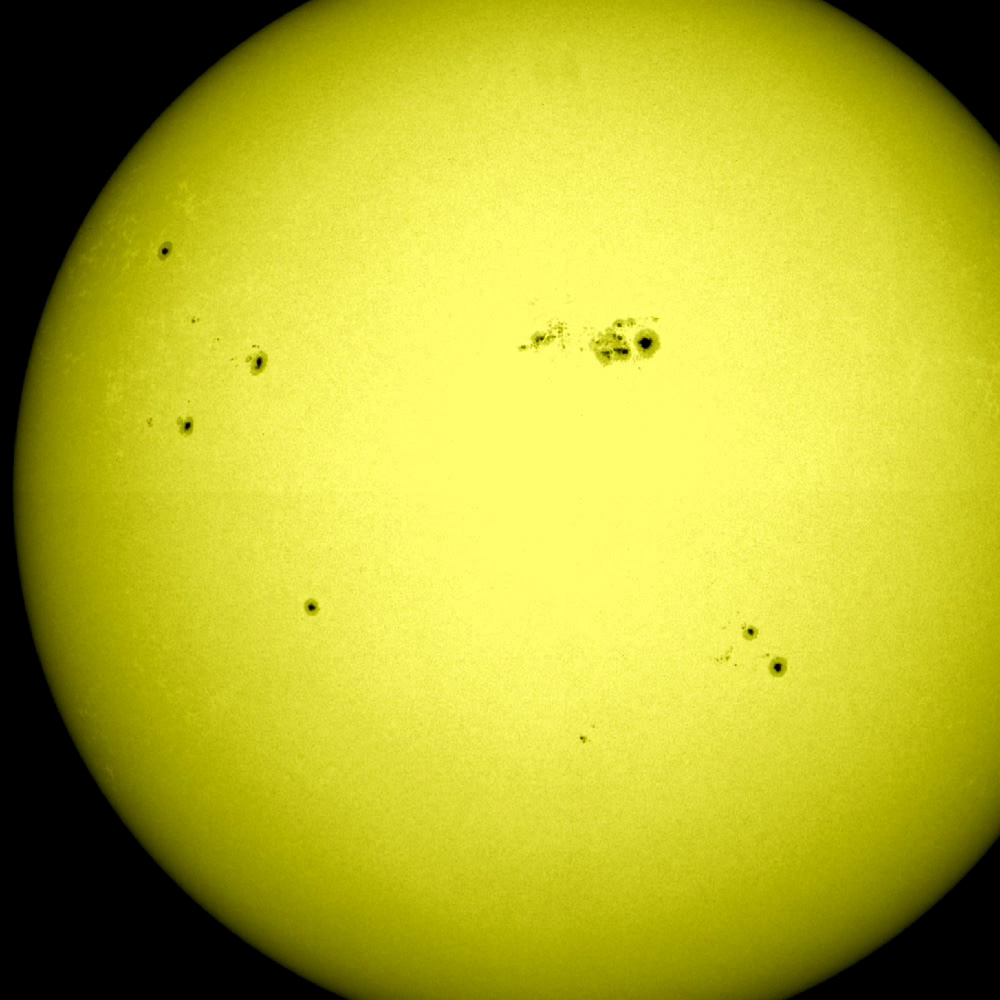
Probably the largest sunspot observed in several years appears in the center of the Sun (Nov. 6-8, 2011) as viewed by the Solar Dynamics Observatory spacecraft. Many smaller sunspots accompany his large sunspot. The large sunspot already propelled several medium- to large-sized solar flares, and has the potential to hurl out more. The large sunspot group extends more than 62,000 miles (100,000 km), and each dark core is larger than Earth. [See more amazing space images]
Going Up! Lunar Elevator
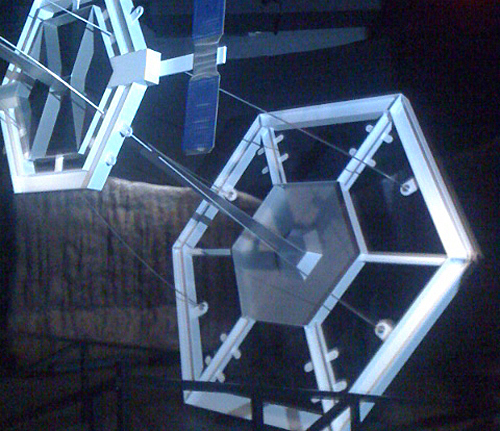
A new exhibit at the American Museum of Natural History will highlight some of the cutting-edge space technology in hand or under way, from a rover that looks for life on Mars to an elevator that rises into space from the moon.
The exhibit opening Saturday (Nov. 19), titled "Beyond Planet Earth: The Future of Space Exploration," gives space and tech fans an up-close look at what may be on the horizon for exploring our solar system.
"Some of these technologies are already being studied and planned, and they are grounded in real scientific possibility," museum president Ellen Futter told media members at a preview of the exhibit earlier this week. [Read More]
Join our Space Forums to keep talking space on the latest missions, night sky and more! And if you have a news tip, correction or comment, let us know at: community@space.com.
Get the Space.com Newsletter
Breaking space news, the latest updates on rocket launches, skywatching events and more!

Space.com is the premier source of space exploration, innovation and astronomy news, chronicling (and celebrating) humanity's ongoing expansion across the final frontier. Originally founded in 1999, Space.com is, and always has been, the passion of writers and editors who are space fans and also trained journalists. Our current news team consists of Editor-in-Chief Tariq Malik; Editor Hanneke Weitering, Senior Space Writer Mike Wall; Senior Writer Meghan Bartels; Senior Writer Chelsea Gohd, Senior Writer Tereza Pultarova and Staff Writer Alexander Cox, focusing on e-commerce. Senior Producer Steve Spaleta oversees our space videos, with Diana Whitcroft as our Social Media Editor.
